
Diesel Living returned to Milan Design Week 2025 with Mirrors and Devoré Denim, a project that pushed the boundaries of material use and spatial identity. Under the creative direction of Glenn Martens, the brand activated its San Babila pop-up and extended its presence through installations at the Lodes and Moroso showrooms. Each space featured dense surface treatments, scraps of indigo denim, reflective silver finishes, and scorched textures, that turned the environments into bold, tactile experiences. Rather than settle for neutrality, Diesel proposed an unapologetic take on domestic design charged with visual energy.
DESIGN
Inside the San Babila installation, Diesel Living submerged walls, ceilings, and floors under layers of denim. A high-shine silver presence interrupted the indigo dominance, creating a visual rhythm that moved between raw and polished. At the center of this environment, two new designs anchored the room: the D-Scape Sofa System by Diesel Living with Moroso, and the D-Burned lamp by Diesel Living with Lodes.
View this post on Instagram
The D-Scape Sofa System introduced a new silhouette to the Diesel Living portfolio. Built in collaboration with Moroso, the piece took cues from space-inspired geometry, with forms that leaned into asymmetry and visual weightlessness. Despite its metallic surface, the sofa delivered comfort through soft curves and deep seating. Its modular design allowed for adaptability without losing presence. D-Scape moved beyond conventional ideas of function, presenting seating as sculpture, one that reflects Diesel’s vision of the home as expressive and tactile.


Next to the sofa, the D-Burned lamp pushed further into material experimentation. Martens reintroduced devoré denim, a technique familiar from Diesel’s fashion line, and used it as a light-diffusing skin. Available in two sizes 60 and 120 centimeters, the fixture draped the denim fabric in layered compositions, letting light pass through burnouts and raw textures. When lit, the lamps created movement through shadow and opacity.
Diesel extended the project through its partners’ showrooms, where additional pieces carried the same design ethos. Moroso and Lodes displayed Diesel Living designs in environments that echoed the San Babila activation. Across these locations, the design language stayed consistent: rough textures, unexpected materials, and an insistence on physicality. Rather than create a visual divide between home and runway, Diesel allowed one to inform the other.
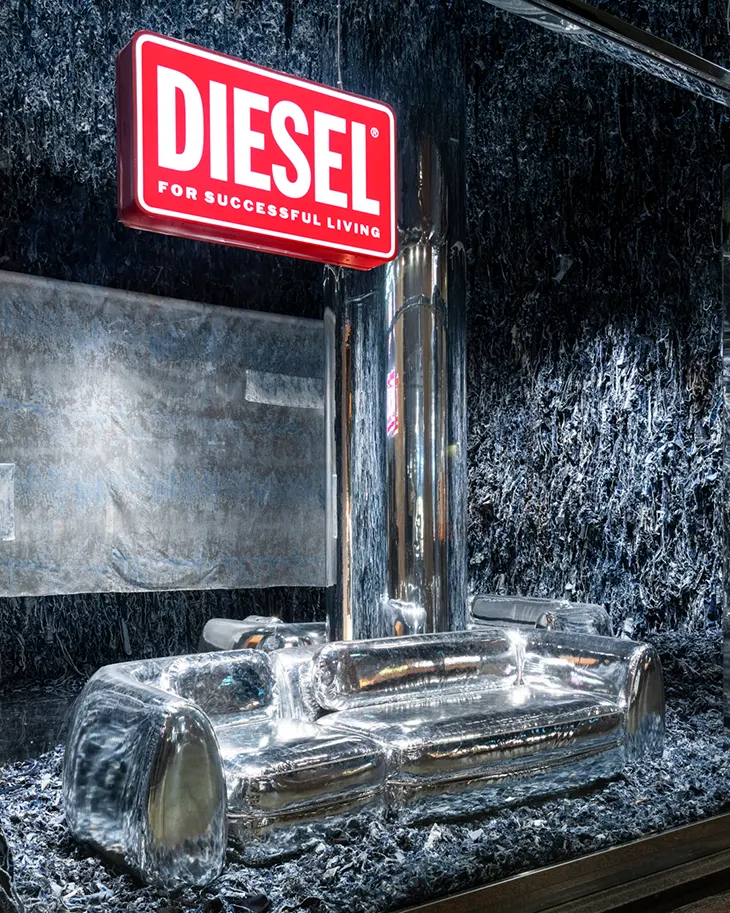
Martens continued to shape Diesel Living as a space where fashion materials and interior objects meet. Denim no longer just belongs to clothing, it stretches across walls, absorbs space, and reframes domesticity. Polished metal surfaces no longer sit quietly as accents, they reflect, dominate, and claim attention. Mirrors and Devoré Denim worked as both presentation and proposition, introducing new products through an immersive atmosphere shaped by raw finish and exaggerated texture.
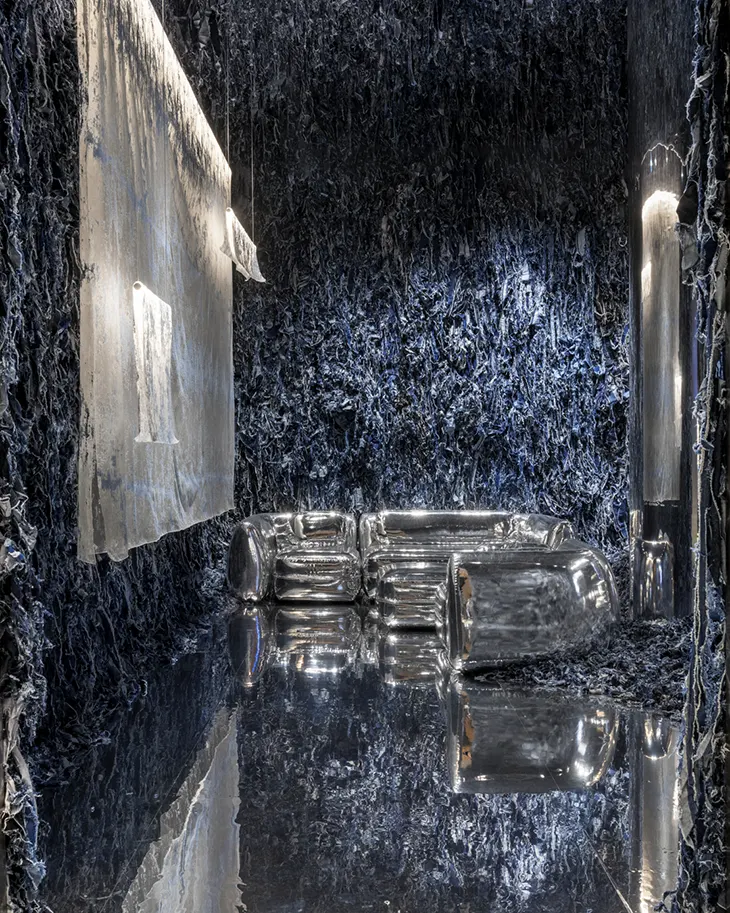














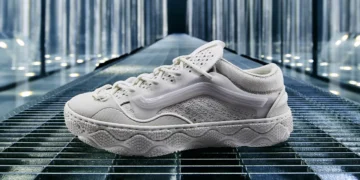
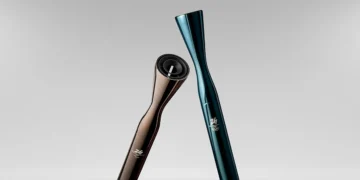
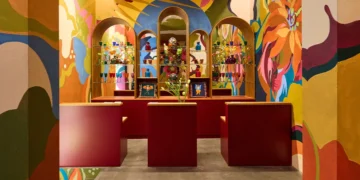
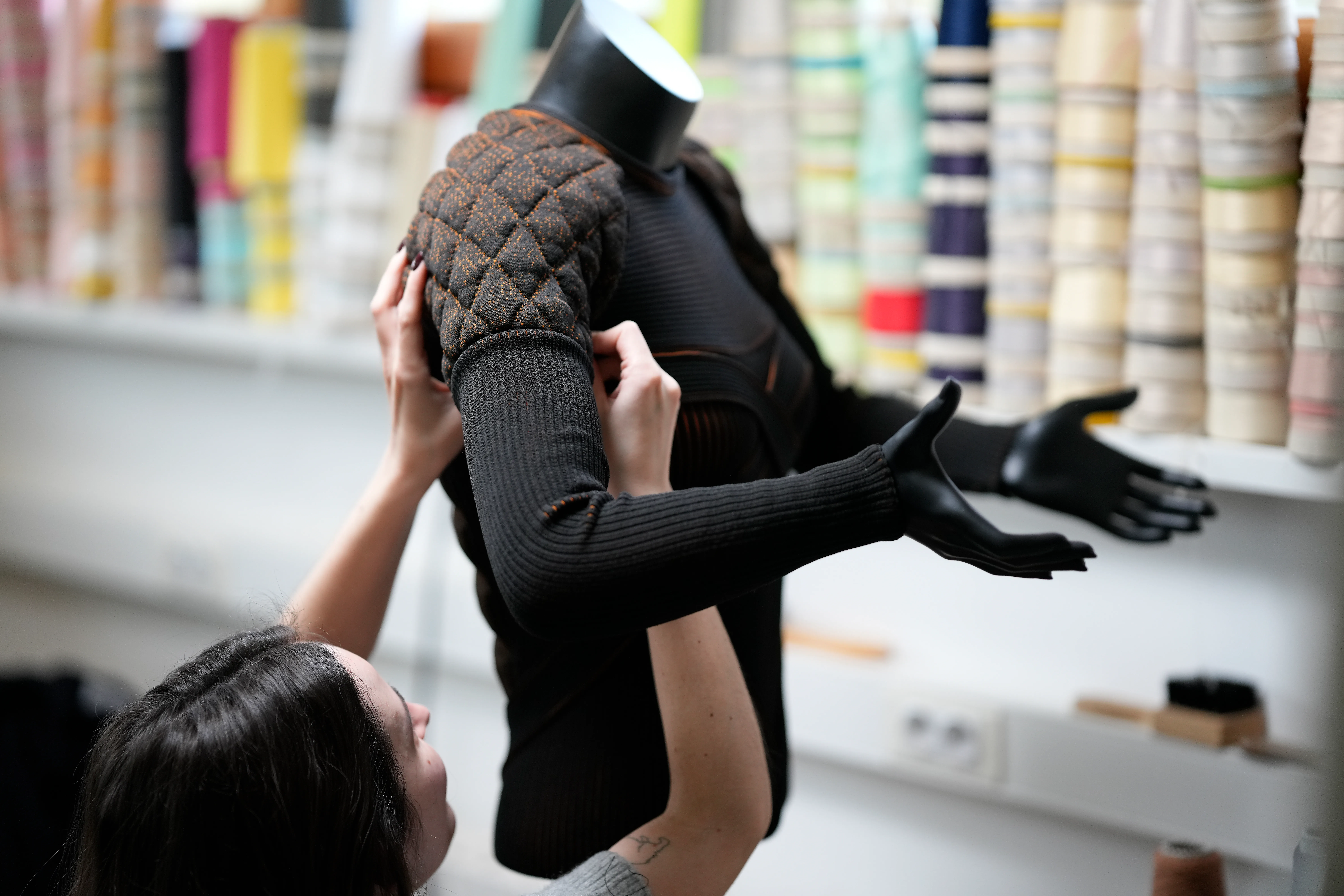

the design is very cool! i wish Diesel Living had a more of a spotlight since its a really great example of how a fashion brand merges contemporary furniture design with its own aesthetic.